Dehydrating fresh baby spinach is the best way to preserve spinach leaves before they have a chance to go bad. Food dehydrator recipes like this will have you saving money and having this tender vegetable on hand whenever you need it.
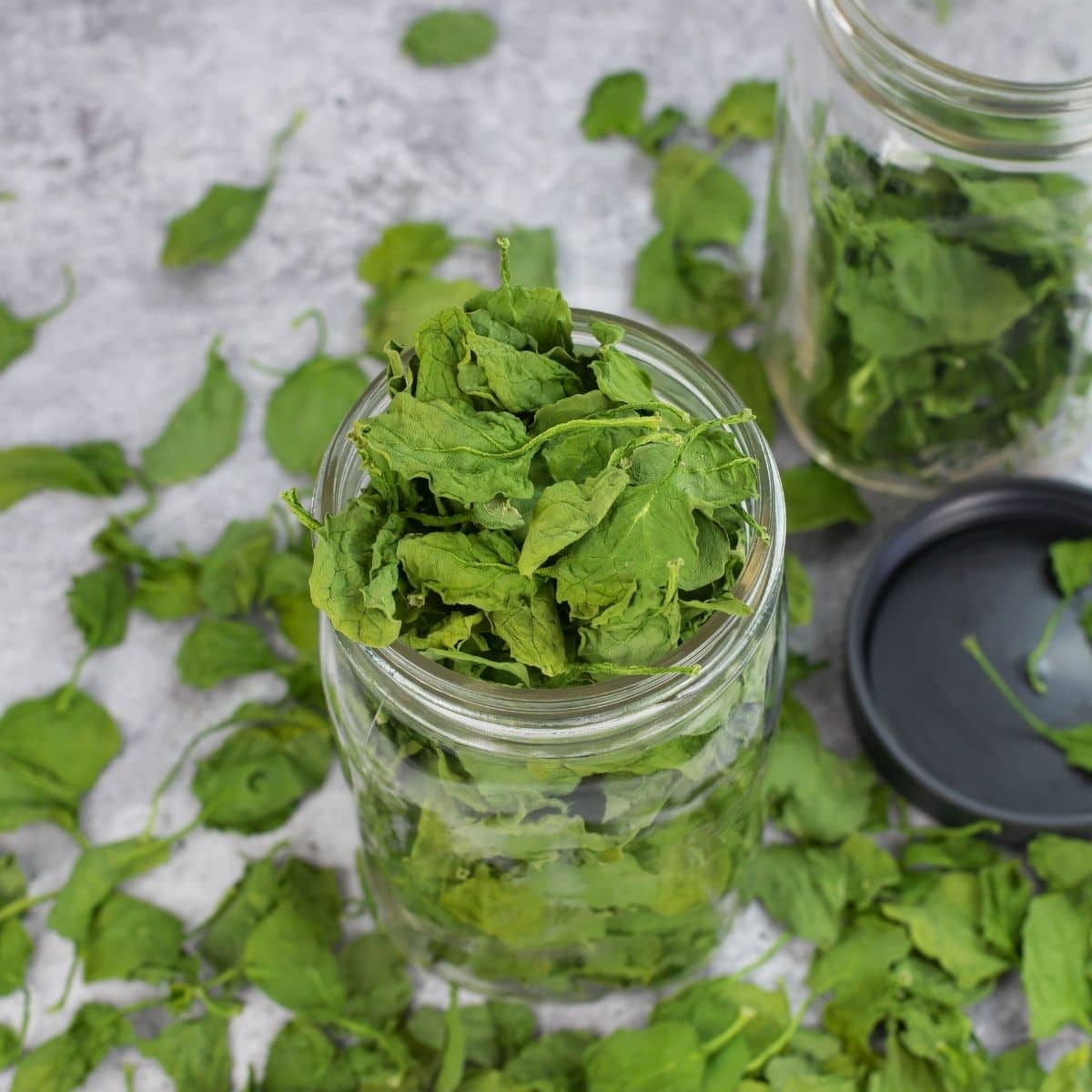
With a fresh and tender vegetable like baby spinach that goes bad quickly preserving it is a great thing to do!
Time after time I'd buy a big bag of fresh spinach and only use a handful of the leaves in a recipe.
After throwing countless bags of slimy spinach in the compost bin I decided to do something about the waste and the cash I was throwing away.
What kind of dehydrator?
Dehydrators come in many shapes and sizes. The price depends on the bells and whistles available on each model.
Buy a dehydrator you can afford. You can always upgrade later down the road.
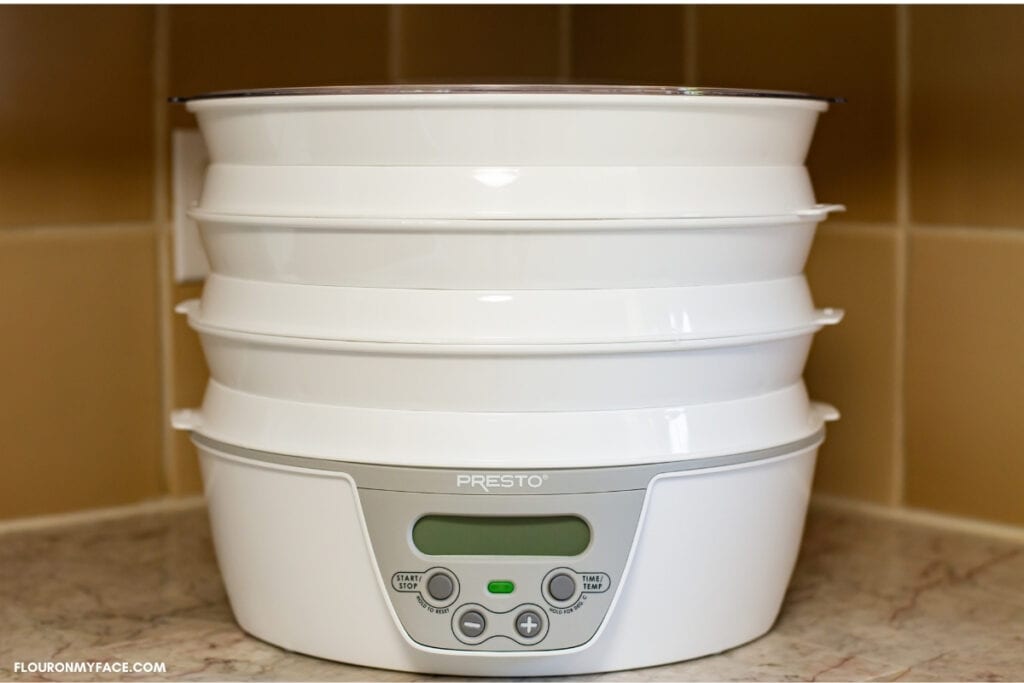
I started out with an inexpensive $30 model with no temperature control or timer and worked my way up to a high end box dehydrator.
Last year I upgraded to an Excalibur. All types of dehydrators will eventually get the job done.
I often have two of my dehydrators going at once when I am drying a large amount of fruit or vegetables.
This was the case while I was drying over two pounds of fresh spinach leaves.
I had my Excalibur packed full and 8 trays going on my round Presto dehydrator.
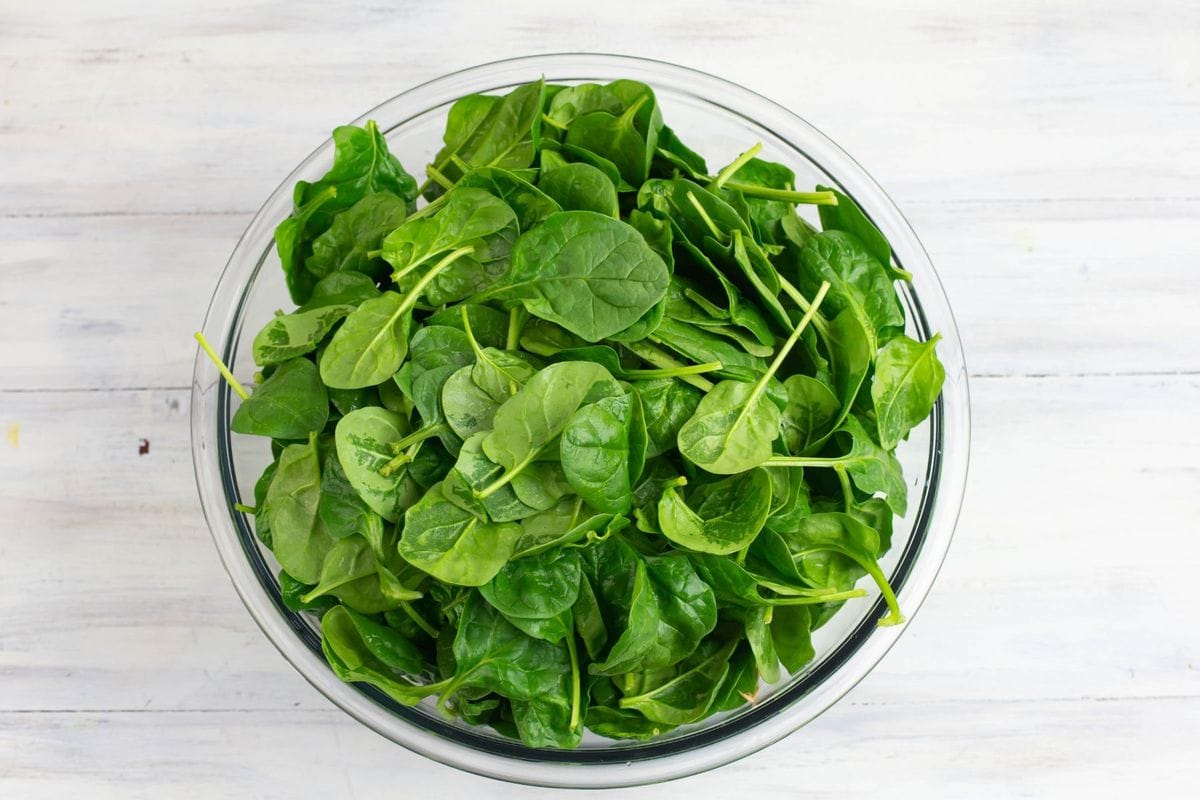
FREE Dehydrating Guide
New to dehydrating and not sure where to start? Grab my free Dehydrating Quick Guide to get started.
Ingredients
You only need two ingredients to dry spinach. You'll need fresh spinach leaves. Baby spinach or large spinach leaves will both work. And plenty of cold water to rinse the spinach leaves until the water is free of dirt.
- fresh spinach
- cool water
How to make dehydrated spinach leaves
Drying spinach is very easy to do. Follow the steps below along with the tips I share to perfectly dry this favorite vegetable.
Step 1: Rinse fresh unblemished spinach leaves well in cool water. Remove any bruised or blemished leaves. Place the spinach in a salad spinner and dry very well.
Step 2: Arrange the spinach leaves on dehydrator trays. You can pile the spinach but spread it out evenly over the tray.

What temperature to use?
Step 3: Set the temperature on the dehydrator to 95 F. to 110 degrees. The low temperature works well for anyone following a raw food diet.

It also works well when dehydrating tender vegetables and herbs.
If the dehydrator does not have a temperature control you don't need to do anything. But keep in mind that this type of model will run at one steady hot temperature.
The one that I own runs at 165 F. degrees. That is too hot for the raw food diet. The spinach will dry much faster in a shorter period of time. You will need to check the drying vegetable more frequently.
Step 4: Stack or slid the dehydrator trays into the food dehydrator. Place the lid on and set the timer for 8 hours or longer.
Keep in mind the temperature you are using. This is where the model of dehydrator you are using makes a huge difference. (See more info below)
Step 5: Allow the spinach to dry for 2 to 4 hours before checking how dry it is.
If you are using an appliance that is set to a higher temperature check it after 2 hours. The recommended temperature to dry spinach is 95 to 110 F. degrees.
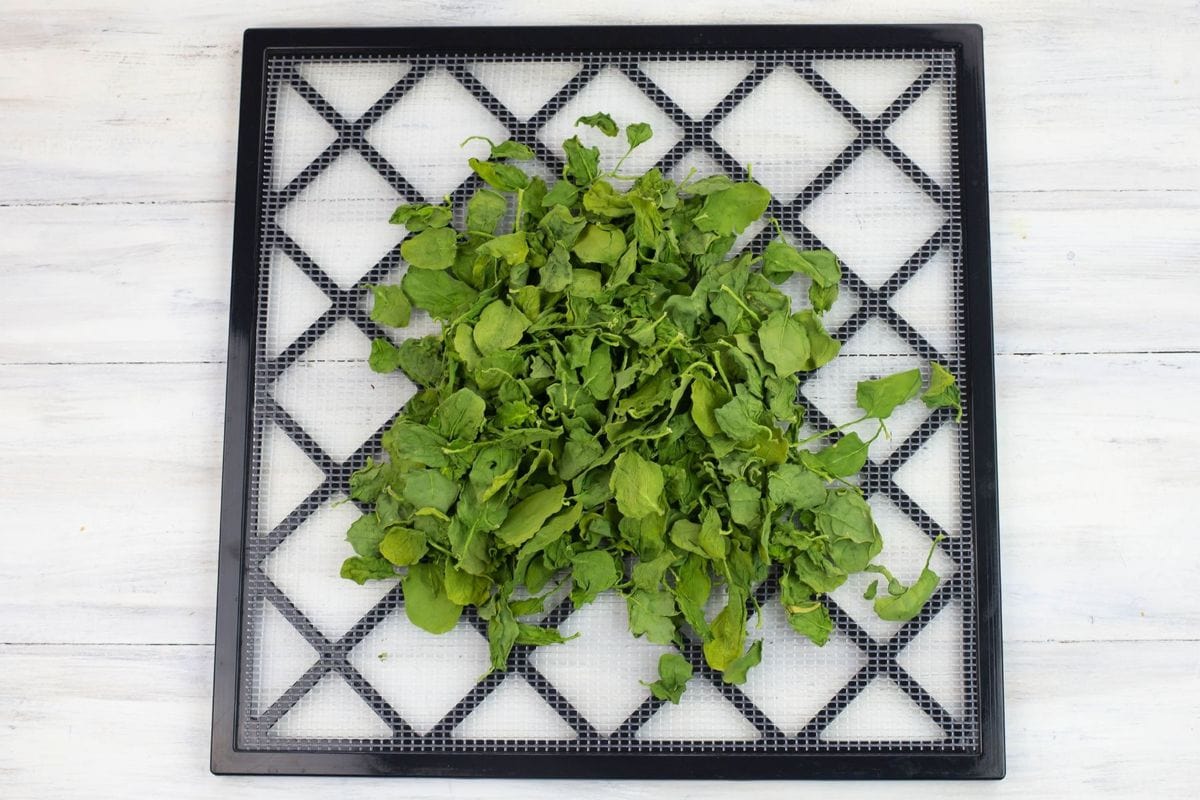
Step 6: How long you will need to dehydrate the spinach will depend on many factors. The temperature you use, how damp the spinach was when loaded, how thick of a layer of spinach, the humidity and temperature of your home all play a part in the length of time it will take to dry.
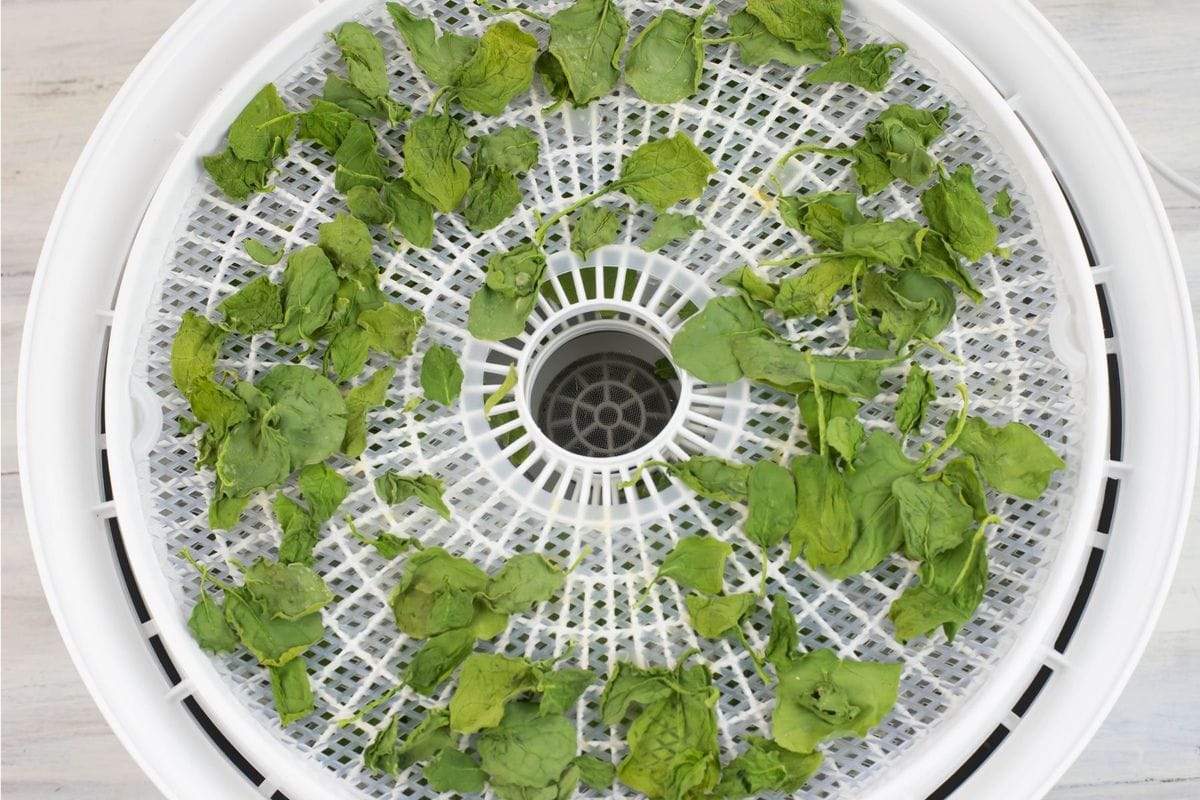
For me at 95 degrees in the Excalibur the spinach was dry after 7 hours. In the round Presto at 95 degrees it took 16 hours to completely dry.
Why is there such a difference in the amount of dehydrating time?
It takes longer to dry in a round dehydrator because the less expensive appliance doesn't have to same even air flow as the more expensive box shaped appliance.
Both appliances will get the job done. It will just take longer in the round one.
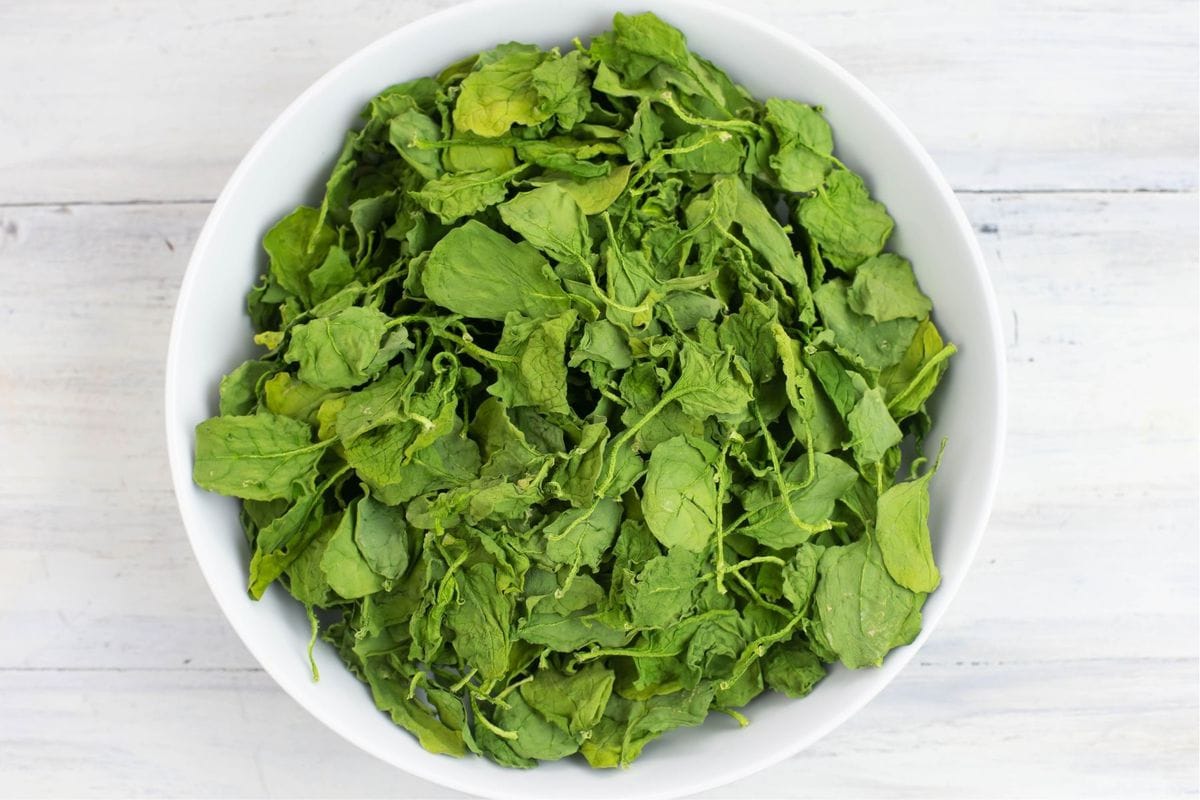
Step 7: How to tell when it is done? Remove a tray from the dehydrator and allow it to cool before checking to see if it has finished drying. Pick up a handful and squeeze.
The leaves should not feel damp or cold. They should feel dry, crisp and crumble when you squeeze the dried leaves together.
If some of the leaves are not completely dry return the tray and continue to dehydrate until all of the leaves are crisp.
How to store dried spinach
Once the spinach is dry turn off the appliance and allow the leaves to cool to room temperature before storing.
Properly storing dried spinach is as important as properly drying it. An airtight container should be used for best results. Transfer the spinach to an airtight container.
Store the dried spinach out of direct sunlight in a dark cabinet to prevent the colors of the leaves from fading.
I like to use glass mason jars to store my dehydrated foods. But you can store the spinach in zip topped baggies or air tight food grade containers.
To extend the storage life you can use a vacuum sealer to remove all the air from glass canning jars or vacuum sealed bags.
Recipe FAQ's
Dried spinach can last up to a year or longer if it has been properly dehydrated and stored. Make sure it is completely dried before storing. Store in an airtight container out of sunlight. A dark pantry cabinet is perfect. If vacuum sealing and the spinach can last many years.
Dried spinach can be as healthy as fresh spinach. As long as you dry it properly and at a low temperature. A low temperature will keep all of the nutrients intact.
Rehydrating dried spinach is as easy as soaking the dried leaves in warm water. Place the amount of spinach you need in a bowl. Pour very warm water over the leaves. Allow the spinach to soak for 30 to 60 minutes or until it has absorbed enough water to make it soft. Drain the rehydrated spinach well and cook in your recipe.
Recipe Expert Tips
- Wash the spinach leaves well before drying. Even if the packaging says it is prewashed.
- Dry the spinach very well before dehydrating. Use a salad spinner to remove as much water from the leaves as possible. Or gently dab with a soft towel. Starting with dry leaves will speed the dehydrating process along.
- Dry the spinach leaves completely to prevent mold from developing while storing.
- If making spinach powder dry the leaves until they feel very crisp.
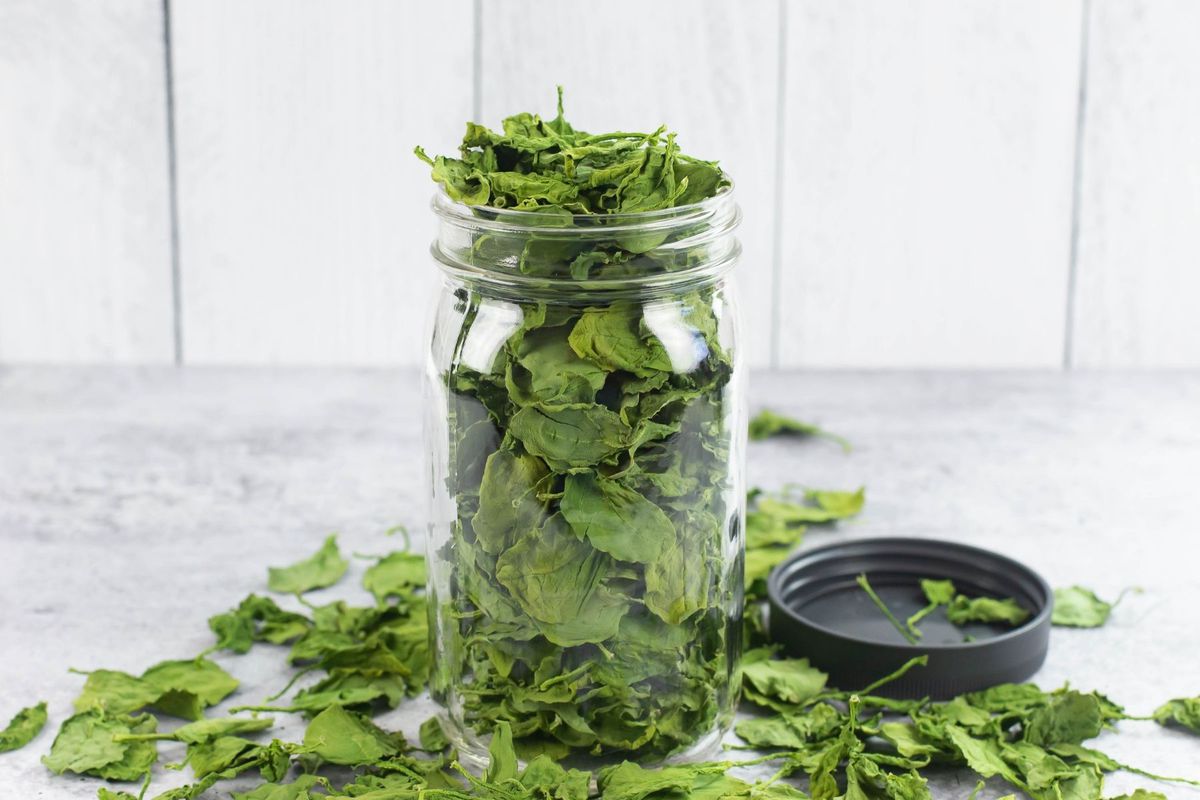
How to use dried spinach leaves
Dried spinach leaves can be used in many ways. There are many recipes that you can make using dehydrated spinach. Cooking with dehydrated spinach is just as easy as cooking with fresh spinach.
- Soups & Stews: You can add whole dried spinach leaves to soup recipes like this creamy chicken vegetables soup. Just add the dried spinach leaves to the soup pot as it cooks. They will absorb some of the liquids and rehydrate during the cooking process.
- Rehydrated spinach: Soak the spinach in warm water to rehydrate and use them in any recipe that calls for cooked spinach. Add the rehydrated spinach to, eggs, breakfast muffins, spinach dip, mac & cheese, pasta, meatballs, ravioli or lasagna.
- Spinach chips: Toss the fresh leaves with olive oil and sprinkle with a favorite seasoning. Arrange the leaves in a single layer on a tray and dehydrate until crispy.
- Spinach Powder: You can grind the dried spinach into a fine powder or spinach flakes and use in recipes.
Spinach Powder
Homemade spinach powder is a great way to add a serving of healthy vegetables to smoothies, breakfast muffins, or a quiche.
Or add the spinach powder to any recipe you would like to add a healthy punch of spinach to.
Dehydrating Spinach
Save money and preserve tender spinach leaves from the garden or grocery store. Dehydrating vegetables is a great way to stock your pantry with fresh vegetables that you can enjoy any time of the year.
More dehydrating recipe
Check out some of the other fruits and vegetables you can dry to have one hand in the pantry.
Email questions or recipe requests to flouronmyface@gmail.com. Follow me on Pinterest, YouTube, Instagram and Facebook.
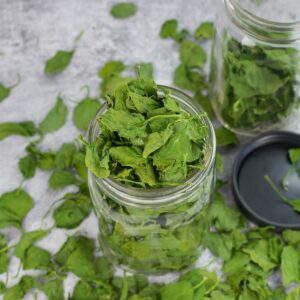
How to Dehydrate Spinach
Equipment
Ingredients
- 2 lbs. fresh spinach leaves
- 3 cups water
Instructions
- Rinse fresh unblemished spinach leaves well in cool water. Remove any bruised or blemished leaves. Place the spinach in a salad spinner and dry very well.
- Arrange the spinach leaves on dehydrator trays. You can pile the spinach but spread it out evenly over the tray.
- Set the temperature on the dehydrator to 95 F. to 110 degrees. The low temperature works well for anyone following a raw food diet.
- Stack or slid the dehydrator trays into the food dehydrator. Place the lid on and set the timer for 8 or more hours.
- Dehydrate the spinach leaves until they feel dry, crisp and crumble when you squeeze the dried leaves together.
- Transfer the dry spinach to an airtight container.
- Store the dried spinach out of direct sunlight in a dark cabinet to prevent the color of the leaves from fading.
Video
Recipe Expert Tips
- Wash the spinach leaves well before drying. Even if the packaging says it is prewashed.
- Dry the spinach very well before dehydrating. Use a salad spinner to remove as much water from the leaves as possible. Or gently dab with a soft towel. Starting with dry leaves will speed the dehydrating process along.
- Dry the spinach leaves completely to prevent mold from developing while storing.
- If making spinach powder dry the leaves until they feel very crisp.
Nutrition
More Dehydrating Recipes
Check out my recipe page for more fruit and vegetable dehydrating recipes.








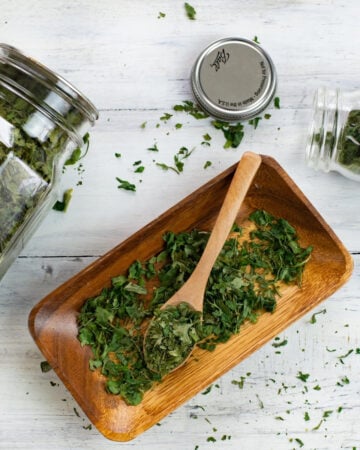
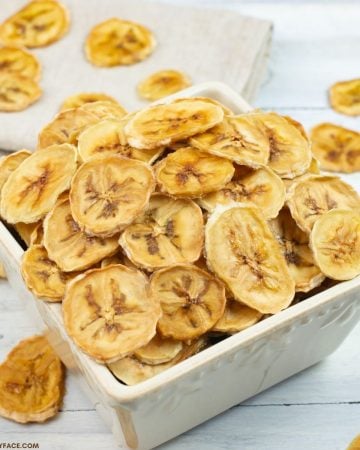
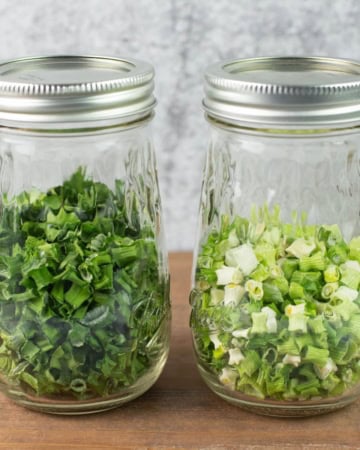
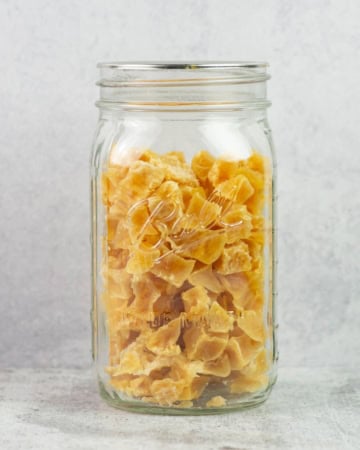


Tracy Lynn
I never thought of dehydrating spinach! What a great way to preserve such an amazing vegetable. I especially love the spinach chips, will have to try that one myself.
I have an article on how to grow spinach and this will work great as a resource for my readers. So happy I saw this over at the Homestead blog hop!